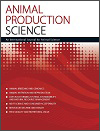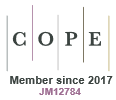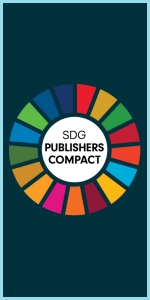Animal Production Science
Volume 65
Number 12 2025
Genetic improvement of beef production systems is a development priority for the northern Australia beef industry, which could be achieved through the adoption of genetic tools. Technical understanding, on-farm data collection, age of farmers, and the economic and productive benefits observed in beef enterprises are factors that affect decision-making by farmers regarding the adoption of genetic tools. This knowledge will allow the development of extension strategies to improve adoption of genetic tools by northern Australian beef producers.
Emission control blocks were evaluated in smallholder cattle (n = 80) in Cambodia. The average change in body weight and estimated daily production of methane over the study period for treatment cattle was a 5.31 kg liveweight gain and 88.0 g CH4/day, compared to 2.97 kg liveweight gain and 106.0 g CH4/day for control cattle. Modelling of emissions intensity indicated a 29.1% reduction in total CH4.
This article belongs to the collection: Sustainable Animal Agriculture for Developing Countries 2023.
Nitrogen excretion in feces and urine of beef cattle is a potential environmental contaminant. This impact is minimized by adjusting dietary protein levels according to nutritional requirements. However, measuring nitrogen excretion on farms is unfeasible. Therefore, nitrogen excretion prediction equations will be useful to understand the environmental impact of production systems.
This study investigated the environmental impacts of livestock intensification (integrating improved feeding, breeding, and biosecurity measures in beef–pork production systems) in Vietnam’s Northwest Highlands. It identified pathways to sustainable practices that enhance productivity while mitigating greenhouse-gas emissions and promoting regenerative practices at multiple scales (farm and landscape).
This article belongs to the collection: Sustainable Animal Agriculture for Developing Countries 2023.
This systematic review evaluates the effectiveness of cryoprotective and stimulative additives in enhancing the quality of post-thaw bovine semen. A thorough literature search was conducted using three databases, to identify studies on stimulative and cryoprotective additives used in the cryopreservation of bull semen. Natural additives, including moringa extract and honey, showed similar effectiveness to synthetic additives, with cost and sustainability advantages. Therefore, this review emphasizes optimizing additive selection and concentrations based on their specific roles and interactions.
Naked Neck hens offer key advantages for family poultry farming, especially in warm climates. Their higher heat tolerance helps maintain stable feed intake and consistent egg production, unlike fully feathered breeds. They also exhibit better feed conversion efficiency, lowering feeding costs and improving resource use. With reduced metabolic heat production, they achieve better thermal balance, supporting growth and reproduction. These traits make them a sustainable and profitable choice for small-scale poultry systems facing challenging environmental conditions.
During winters in subtropical climates, the temperature of drinking water in troughs falls below 10°C. Increasing drinking water temperature to 20–24°C improves buffalo productivity by increasing milk yield and feed intake during winter. Warm water helps buffaloes maintain body temperature, reduce respiration rate, and alleviate cold stress, ensuring better physiological stability. Improved hydration and nutrient absorption contribute to better overall health and efficiency in dairy buffalo management. The study identified a cost-effective strategy for dairy farmers; heating water beyond 20–24°C provides no additional benefits.
Fats are essential to our health, but many of us struggle to maintain a healthy balance between harmful and helpful types. Our research shows that certain genes govern the creation of beneficial fats like omega-3 and omega-6, paving the way for reducing unhealthy saturated fats in livestock products. This discovery could lead to healthier foods for everyone and open new doors to treatments that tap into the power of these vital fats.
The unexpected losses of genetically valuable animals have led to possibilities to preserve their genetic material. This study aimed to evaluate viability of spermatozoa retrieved from the epididymides refrigerated for 24 h at 5°C, diluted with Triladyl® or modified Ham’s F10, and preserved for 120 h at 5°C. The results revealed that cooling of epididymides before the recovery of sperm cells was efficient in preserving epididymal sperm viability.





